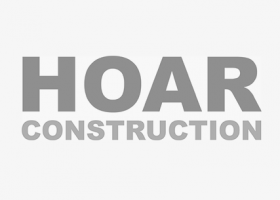Four Landmarks of Wood Framing
In the first edition of this series we looked at a blend of timber structures, from the historic Horyu Temple, to the giant Yooper dome – each claiming some kind of superlative, be it the oldest, largest, greenest or tallest.
In the second edition we’ll look at some modern structures that greatly exemplify the use of wood products (such as cross laminated timber and glulam), prefabrication, modelling software – all serving as testaments to the feasibility of wood finding greater adoption as a construction material for the cities of tomorrow.
Without any further ado, let’s dive right into this article and read about four more spectacular timber buildings.
Wood Innovation and Design Center
- Location: Prince George, BC
- Height: 29.5 meters
At the time of its completion in 2014, the Wood Innovation and Design Center (WIDC) was the tallest wooden building in North America, and one of the tallest wood buildings in the world at 29.5 meters. That record has been broken several times over the years, but not since the construction of the Mjostarnet – which currently remains the undisputed champion of tall wood framed buildings at 85.4 meters high.
Designed by Canadian architect Michael Green, who has been a staple personality in the field green building, the WIDC houses the University of Northern British Columbia’s Wood Design faculty,
As suggested by its name, WIDC’s goal was to showcase the feasibility of wood as the primary building material for city architecture, satisfying all the demands of rigid building codes. Financed by the Province of British Columbia, 250 people worked to bring the project to life using 1400 cubic meters of wood, sourced from British Columbia’s ample forests. The 6 story tall building contains lumber sourced from many different species, such as the Douglas-Fir, Cedar, White Spruce and Engelmann Spruce.
WIDC’s Wood Framing
The integral structure of WIDC is made of wood, including mechanical, elevator and stair shafts. The only area where concrete was used in the structure was below level, in the foundations. It employs a balloon framing system where columns are continuous, and beams are attached to the sides of those columns.
The primary wood products used for building the frame were cross laminated timber (CLT) and glulam, or glued laminated timber, with some usage of laminated veneer lumber (LVL). The central core of the building, consisting of elevator and stair walls, was built using CLT panels.
Next, glulam beams and columns were framed around this core. The wood framing products were prefabricated, cut to millimeter precision using CNC machinery, and were brought on-site ready to be assembled in place.
Another great benefit of prefabricating buildings and assembling them together like a giant piece of Ikea furniture is the ability to reuse the wooden members at the end of the building’s functional life cycle – instead of demolishing the building, the lumber can be disassembled, recycled and purposed elsewhere.
Cross laminated timber was used in the floor slabs, which were constructed in a staggered style, allowing for MEP equipment to run smoothly from below the floor to above the ceiling. Finally, the wooden cladding was completed with laminated veneer lumber having been applied to windows and doors. The entire process took place over the Fall of 2013 until the Spring of 2014,
A natural concern when considering wood buildings is their resistance to fire. The WIDC’s wooden components underwent rigid testing, the CLT panels were put in an oven firing at 871 degrees Celsius or 1600 degrees Fahrenheit, with the panels and its connection members maintaining a 1 hour fire resistance rating.
Las Setas de Sevilla
- Location: Seville, Spain
- Also known as: Metropol Parasol
For this entry we’re going all the way to Southern Spain, in the La Encarnación square of Seville. Also known as the Metropol Parasol, this structure was built to serve multiple purposes including boosting the city’s tourism industry, by becoming a new modern landmark in contrast to the historic Seville Cathedral.
To that effect Southern Spain’s tourism website claims it to be the largest wooden structure in the world, while engineers Arup chose to be more modest and call it one of the largest timber structures ever built. As far as superlatives go, it is the largest timber structure with polyurethane coating, which is also sometimes used as the glue or bonding material for CLT panels.
Las Setas de Sevilla, or the Mushrooms of Seville, or the Mushrooms of Incarnation if you will, is a beautiful city structure that consists of 6 seamlessly connected wooden ‘parasols’, its most striking feature – the waffle-like undulating network of interconnected timber elements. The 6 parasols are connected at the top, with separate reinforced concrete and steel bases.
The 150 m long, 28 meter high structure uses 3400 laminated veneer lumber (LVL) panels. These timber members were sourced, prefabricated and pre-assembled at a factory near Munich, Germany, before being installed on-site after transportation to Seville.
Renowned for its fiery Mediterranean summers, the builders of Las Setas needed to find a way to protect the structure from the elements and maintain its pristine beauty for years to come. The exposed wood is protected by 2-3 millimeters of Polyurethane coating protecting it from harsh weather, moisture, as well as the blazing Spanish heat.
Tillamook Air Museum
- Location: Oregon, USA
- Height: 20 m
Renowned Originally built in 1943, the Tillamook Air Museum holds the superlative of the largest, free standing wooden structure in the world bestowed upon it by the Guinness Book of World records in 1992. It covers an area of 6 football fields, roughly 327 meters tall.
It originally served as an airplane hangar for the US Naval Air Station in Tillamook, during world war 2. Today it serves as a World War museum with artifacts of interest for history and aviation enthusiasts, including some portions of what’s left of the famous Hindenburg blimp.
The museum Consists of more than 4720 cubic meters of Douglas Fir sourced from the surrounding Oregon forests. It required so much wood in so little time that 50 lumber companies were working together to supply the required lumber.
The construction was completed over a time period of 9 months, with one of its primary structural components that also give it its shape, being the giant wooden arch trusses, almost 15 stories high.
Brock Commons Tallwood House
- Location: Vancouver, BC
- Height: 54 m
Yet another wood framed landmark from BC, is Brock Commons Tallwood House. True to its name, at 54 meters high this structure was the tallest wooden building in the world at the time of its construction in 2017. Situated on the campus of the University of British Columbia, it serves as a residential building to hundreds of students with the capacity to house roughly 400 inhabitants.
The Tallwood House is a hybrid building, using concrete along with wood products such as cross laminated timber, glulam and parallel strand lumber or PSL. The building’s elevator and stair core is made of reinforced concrete, as opposed to a wooden core used in the WIDC building as featured above.
Being considerably taller than the Wood Innovation and Design Center building (54 m compared to 29.5) and therefore subject to greater lateral loads caused by wind or seismic activity, concrete was used to stabilize Tallwood House’s core including the foundation all the way up to the second floor slab.
The rest of the structure is made of CLT floor panels, with glulam wooden framing members that are reinforced by parallel strand lumber. The exterior of the building is a hybrid between steel framed panels and wood.
The overall construction took a quick 18 months, due in part to the use of modeling software as well as the prefabrication of the wooden framing and steel framing components, in a controlled factory environment – resulting in great accuracy, and allowing the timber structure and exterior cladding to be completed within 3 months, at a rate of 2 floors per week.
Use of building design software.
A significant aspect of this building’s construction was the use of BIM software. By creating a digital twin of the structure, builders were able to identify constructability issues before the first drop of concrete was poured. The digital twin served as the invisible ‘team member’, improving coordination and collaboration between different disciplines such as the architectural, structural and MEP teams.
This meant that any potential multidisciplinary clashes that could have occurred during construction were identified earlier on, allowing teams to avoid rework and improve their sense of involvement in the project.
Building design software also facilitated the prefabrication of wooden components – the material with its specified dimensions was modeled, extracted into a bill of materials with the data being fed into CNC machinery, outputting components with precise specs as earlier defined, meaning that the mass timber structure was completed within 2 months after the components arrived on site for installation.
Wood framing is at the core of what we do at StrucSoft Solutions. Providing professionals with industry leading solutions for over 20 years, our flagship product MWF is the industry leading Revit based steel and wood framing software.
Learn more about MWF and its different modules here or see it in action and download your free trial here.
For more information on our products or design services, visit strucsoftsolutions.com or email us at info@strucsoftsolutions.com.
{{cta(‘3376e831-dc64-4659-90ca-0292502bc61f’)}}
 StrucSoft Solutions is the market leader in comprehensive Autodesk® Revit®-based BIM framing, with both off-the-shelf and custom solutions targeting the AEC and fabrication sectors. Our star solution MWF simplifies complex Revit® framing with its powerful range of tools for modeling, inter-trade clash detection, custom construction documentation and optional output to CNC machines.
StrucSoft Solutions is the market leader in comprehensive Autodesk® Revit®-based BIM framing, with both off-the-shelf and custom solutions targeting the AEC and fabrication sectors. Our star solution MWF simplifies complex Revit® framing with its powerful range of tools for modeling, inter-trade clash detection, custom construction documentation and optional output to CNC machines.










